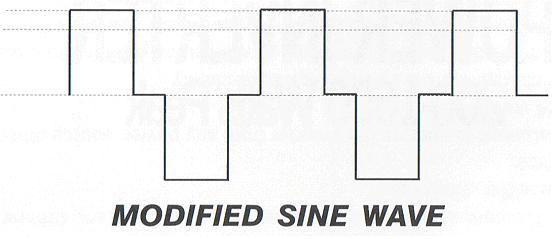- Joined
- 27 Jan 2008
- Messages
- 23,671
- Reaction score
- 2,668
- Location
- Llanfair Caereinion, Nr Welshpool
- Country

Reading the stuff on RCD's it talks about type A, AC, and B and says:-
OK that's theory but what I want to know is practice. Has anyone had problems with RCD's with this wave form and does one really need to change any type AC RCD's or in practice will they still work? If changing what type is required? As far as I can tell type B are quite rare Siemens and ABB make them but this would likely require a consumer unit change and although a distribution unit can be used where I am looking now as the system is under continuous control of a competent person in other cases one is likely to only be able to fit a type tested consumer unit and invariably these are supplied with type AC already fitted.
So has anyone tested a type AC with an inverter supply and did it trip OK? i.e. is there any real need to worry? Once inverter is fitted we can test of course but likely to be on a Sunday so prior knowledge would be handy.
However the wave form shown does not look like this and I wonder how the three types will work with that wave form? This is what is produced by cheap inverters and because of steep sides will often fail to operate thyristor controls and also because of flat top does not have the peak voltage of a true sin wave some cheap meters will record it as being a low voltage although true RMS meters show correct value.RCD type AC is the oldest type and it can only detect AC fault currents.
RCD type A is the most commonly used RCD type today. It can detect AC and pulsating DC fault currents, provided the DC fault currents cross or touch zero at least once in every 360° mains voltage cycle.
RCD type B is a new type. It can detect AC, pulsating DC and smooth DC fault currents.
OK that's theory but what I want to know is practice. Has anyone had problems with RCD's with this wave form and does one really need to change any type AC RCD's or in practice will they still work? If changing what type is required? As far as I can tell type B are quite rare Siemens and ABB make them but this would likely require a consumer unit change and although a distribution unit can be used where I am looking now as the system is under continuous control of a competent person in other cases one is likely to only be able to fit a type tested consumer unit and invariably these are supplied with type AC already fitted.
So has anyone tested a type AC with an inverter supply and did it trip OK? i.e. is there any real need to worry? Once inverter is fitted we can test of course but likely to be on a Sunday so prior knowledge would be handy.

